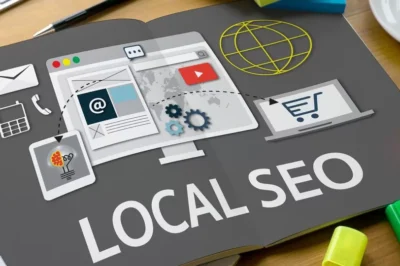Optimizing a Shopify Store
One of the great things about Shopify is that there are so many things you can do to improve the performance of the platform with respect to SEO. These are some of the reasons that it is widely considered an “SEO-friendly platform.”
With no further ado, let’s look at some ways you improve the performance of nearly any Shopify website right now, without any help from a Shopify SEO agency.
(Disclaimer: this short post assumes you have already done keyword research and selected a group of target keywords and URLs you want to target in concert with them.)
Page Titles and Headers
Updating page titles and headers is so easy it’s like caveman SEO, but still, even in 2023 (on the eve of 2024) a simple change like adding a keyword into a page header will likely have the biggest impact of all on your SEO.
Add your target keywords into the headers for your Shopify store and add a few new headers where it makes sense to do so. You should see organic increases for those pages within weeks (if not days, in some instances) after making the changes.
Write Your Own Meta Descriptions
Google will auto-generate a meta description for a page based on that content that it is on, if you don’t but that’s no reason to play games with your ranking signals.
Draft your own to make them more relevant to what your users are looking for (answer questions about your products for instance) and be sure to include your target keywords in the copy.
Redo or Enhance Existing Page Copy
If you have duplicate copy on your product pages (such as if you stole it from a distributor’s website) get rid of it.
Also, now is the time to go back and redo or enhance your existing copy on those key URLs that you picked out. Add in keywords, add questions, and add sections where it makes sense to do so.
Create a Blogging Schedule and Get Going
Blogging can serve as an enormously effective lead generator and a good blog can pull tens of thousands if not hundreds of thousands of views per year – possibly even more.
Look up what people are asking or talking about your products or products similar to yours, then answer those questions in blogs or create user guides, maintenance guides, or blogs with other helpful information.
Then, in those blogs, use your target keywords as anchor text for hyperlinks to the target URLs you picked out. This will transfer some of the authority from the affected blog to the target URL, which when properly implemented will increase your impressions for both.
Update Your Images
Often, the main reason web pages get poor load speed scores is because of images that are too large. Run your pages through a checker, and if they fail because of images, take down your images, run them through a compressor (there are tons of free ones) and then re-upload them.
When you re-upload them, take this opportunity to enhance the image file’s alt text field with some of your target keywords for the page on which the image will be present.
On Hiring a Shopify SEO Agency
While these tips are helpful, they only scratch the surface of an effective SEO campaign. In some instances, it might make more sense to hire an accredited Shopify SEO agency.
A Shopify SEO agency can take a lot of the work (like keyword research, content drafting and optimization and on-page optimizations) off your plate.
Moreover, a qualified Shopify SEO expert can also probably help you build links and improve technical SEO, user experience, and site speed, all of which also impact your overall search engine optimization score.
Climbing the ladder of the search results with a Shopify SEO strategy is not out of the question. Increasing traffic and sales for your online store over the long-term with an effective organic search engine optimization strategy is the answer.
You just need to figure out how much you can do on your own and if it makes more sense to hire an expert third party.
